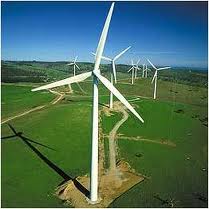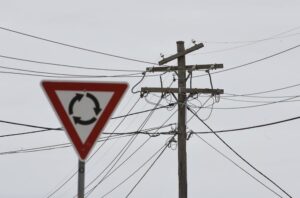Acoustic engineers are increasingly frustrated by community opposition to wind farm development as local opposition groups – often supported nationally by anonymous donors – snub scientific evidence in favour of myth and misinformation.
But the industry is not sitting on its hands. Hydro Tasmania, the company behind the 600MW TasWind proposal on Tasmania’s King Island, is developing a tool described as “an aural equivalent of visualisation” to help communities assess and understand wind farm noise.
Jason Turner, an acoustic consultant at Sonus – a company that assesses environmental noise from wind farms – told a session at Clean Energy Week, “Often local anti-wind farm action groups are driven in the background by a bigger, broader group. In my mind it’s as if there’s broad-brush support at a national level which is franchised out and picked up locally.”
Wind developers often find themselves up against well-resourced action groups with legal representation and acoustic engineering expertise, “which at face value looks credible and solid,” he added.
State authorities are often found to be hampering sensible wind farm development too, Turner said, referring to the Victorian Civil and Administrative Tribunal (VCAT) hearing in April to ascertain whether the $100 million Infigen-owned Cherry Tree wind farm would get the go-ahead.
“A small number of turbines at a large distant form the nearest house really shouldn’t have any problems at all,” Turner said, adding, “it should really be a fait accompli. But there were three whole days of acoustic evidence given at that tribunal.
Local authorities are now “on the run” because of the pressure being placed on them by action groups.
“Guidelines that are adequate are being usurped [by] much more stringent guidelines… A lot of the time you don’t really realise that as an industry until you have to comply with them. This all happening despite quite categorical statements coming out from government about infrasound,” Turner said.
Christophe Delaire, an associate with Marshall Day Acoustics, noted recent permit conditions not only ask operators to talk about maintaining wind farms in compliance with permit, but go further by asking that the noise management plan includes assurances on ongoing compliance and monitoring.
The Coalition recently called for requirements that all wind farms to provide “real-time” noise monitoring, with the findings immediately publicly available.
But ongoing monitoring wind farm noise is extremely difficult, Delaire said, adding, “There’s a lot of background noise – birds, cars etc etc. You can’t necessarily link noise level to wind farm noise. That’s the critical part here.”
In an airport, for instance, continuous noise monitoring is deployed, but the signal-to-noise ratio is high making it easier to measure. This is not the case for wind farms.
Members of communities close to wind farms often claim turbines harm harm their health, but in 2011 the National Health and Medical Research Council (NHMRC) concluded: “There are no direct pathological effects from wind farms,” and “low level frequency noise or infrasound emitted by wind turbines is minimal and of no consequence… Further, numerous reports have concluded that there is no evidence of health effects arising from infrasound or low frequency noise generated by wind turbines.”
NHMRC is continuing to investigate the impact of wind farms on human health. Its systematic literature review, along with any revisions to its previous statement, is expected to be released for public consultation in the second half of this year.
Arup and Hydro Tasmania are taking action to develop a tool to aid community engagement and counter community opposition.
David Mounter, manager wind asset development at Hydro Tasmania, said a community facing wind farm development, such as on King Island, often doesn’t know what a wind farm sounds like.
“We want a reliable, calibrated, repeatable way of communicating what a wind farm sounds like,” he said.
Arup has developed an auralisation tool that describes noise very accurately by using a sound demonstration.
“It’s a very natural and intuitive way to describe sound – we don’t have to come up with decibels or any other funny words of describing it, we just let people listen,” explains Kym Burgemeister, a senior associate at Arup. “It’s an aural equivalent of visualisation.”
Wind developers and acousticians want to bring the debate back to audible sound. Increasingly opponents are focusing on infrasound – or low frequency inaudible sound – as a valid complaint.
Studies have shown that the level of infrasound in cities and on beaches is far higher than anything caused by the spin of turbine blades. Yet campaigners still claim that, somehow, only the infrasound from turbines is extremely harmful.
“When people are talking about what a wind farm is going to sound like they have had that experience which will disarm rumours and myths. Really about bringing back conversation to ‘what are we going to hear’,” Hydro Tasmania’s Mounter said.
“The problem is not always being believed. Once we’re believed we have succeeded,” he said.










